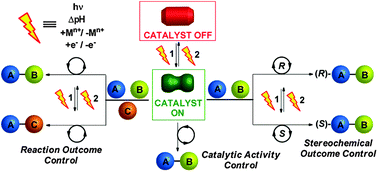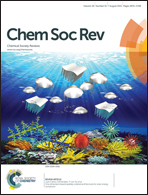Artificial switchable catalysts
Abstract
Catalysis is key to the effective and efficient transformation of readily available building blocks into high value functional molecules and materials. For many years research in this field has largely focussed on the invention of new catalysts and the optimization of their performance to achieve high conversions and/or selectivities. However, inspired by Nature, chemists are beginning to turn their attention to the development of catalysts whose activity in different chemical processes can be switched by an external stimulus. Potential applications include using the states of multiple switchable catalysts to control sequences of transformations, producing different products from a pool of building blocks according to the order and type of stimuli applied. Here we outline the state-of-art in artificial switchable catalysis, classifying systems according to the trigger used to achieve control over the catalytic activity and stereochemical or other structural outcomes of the reaction.

- This article is part of the themed collection: Celebrating the 2017 RSC Prize and Award Winners

 Please wait while we load your content...
Please wait while we load your content...